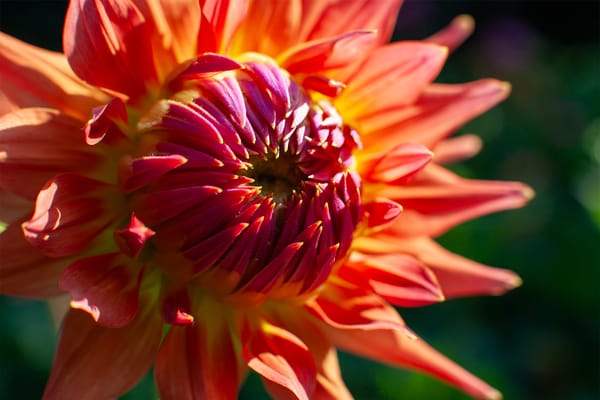How Cornish gardeners are redefining dahlia growing for a warmer, drier future
For centuries, the dahlia has been Cornwall’s floral showstopper—a symbol of late summer abundance, grown in windswept gardens, kitchen plots, and grand estates alike. But as climate change nudges Cornwall’s weather toward hotter, drier summers and unpredictable rainfall, even these beloved tuberous perennials face new challenges.
Gardeners across the Duchy are responding not by giving up on dahlias—but by adapting. From soil science and breeding trials to mulch experiments and revised watering routines, this is the story of how Cornish gardeners are future-proofing dahlias while preserving a cherished local tradition.
Choosing Climate-Resilient Dahlias: Varieties That Stand the Heat
Not all dahlias are created equal when it comes to drought and heat tolerance. Some, thanks to their Mexican mountain ancestry, naturally withstand dry conditions better than others.
Top Drought-Tolerant Varieties for Cornwall:
- Cornel Bronze – A ball dahlia with strong, upright stems and reliable blooms, even in high heat.
- Boom Boom White – Compact and floriferous; thrives with minimal watering.
- Café au Lait – The creamy decorative giant adored by florists, surprisingly vigorous in leaner soils.
- KA’s Cloud – A robust decorative dahlia tested for Cornish resilience.
- Mystic Illusion – Single-flowered, pollinator-friendly, and bred for heat and drought tolerance.
- Bishop of Llandaff – A classic with dark foliage, tough enough for coastal exposure.
- Twyning’s After Eight – Compact, with dark foliage and delicate white blooms that handle summer dryness.
Cornish Tip: Focus on single-flowered, collarette, and ball types, which tend to hold up best in dry spells. Their simpler forms and strong tuber stores make them better suited for fluctuating water availability.
Building Better Soil: The Foundation of Drought Resilience
Healthy soil acts like a sponge—retaining moisture while draining freely. In Cornwall’s sandy or clay-rich soils, preparing the ground is as critical as choosing the right dahlia.
Key Soil Amendments:
- Compost & Leaf Mold – Improve moisture retention and structure.
- Coconut Coir & Aged Manure – Boost water-holding without compacting roots.
- Biochar – Enhances soil life and water-holding when pre-charged with nutrients.
- Mycorrhizal Fungi – Added at planting to improve water and nutrient uptake naturally.
Cornish Insight: Avoid over-enriching the soil; aim for a crumbly, humus-rich structure that supports deep rooting without waterlogging.
Mulching: Your Secret Weapon Against Drought
Mulching reduces evaporation by up to 50%, regulates soil temperature, and keeps weeds at bay—saving time, water, and effort.
Best Mulch Materials:
- Straw or Shredded Leaves – Affordable, effective, and compost down gently.
- Sheep’s Wool Pellets – Insulate soil and improve structure as they decompose.
- Compost or Bark Chips – Offer both moisture retention and weed suppression.
Practical Tip: Apply 6–8 inches of mulch, leaving a small gap around stems to avoid rot. Top up after heavy rain or wind.
Water Wisely: Deep, Infrequent, and Strategic
Contrary to popular belief, dahlias don’t need daily watering—even in drought. What they need is deep, infrequent soaking to encourage roots to grow downward in search of moisture.
- Water when wilt persists beyond early morning.
- Group dahlias with similar water needs for efficient care.
- In heavy Cornish soils, consider planting on ridges or in raised beds for better control.
Flowering in a Warming World: What to Expect
Climate change is shifting bloom times—and sometimes shortening flowering periods.
- Warmer springs may trigger earlier growth and budding.
- Hot summers can reduce bloom duration or cause bud failure in extreme heat.
- Drought stress limits flowering but can be mitigated with soil preparation and mulching.
Adaptation Strategies: Plant later to avoid heatwaves, select heat-tolerant varieties, and monitor plants for early stress signs.
Towards a Sustainable Dahlia Garden
Cornwall’s dahlia growers aren’t just reacting to climate change—they’re leading with sustainable practices:
- No-dig gardening to preserve soil moisture.
- Compost-rich mulching systems.
- Selection of climate-adapted cultivars through local trials.
- Community sharing of surplus tubers and mulch materials.
A Climate-Conscious Future for a Cornish Classic
Dahlias may have arrived from Mexico’s highlands, but they’ve taken deep root in Cornwall’s gardening identity. By blending tradition with adaptation, Cornish gardeners are ensuring that these iconic blooms will thrive—bright, bold, and resilient—whatever the weather brings.
Whether you’re planting your first tuber or nurturing a showbench winner, the message is clear: with care, creativity, and a few mulch bags, dahlias will remain a vibrant part of Cornwall’s garden story for years to come.











